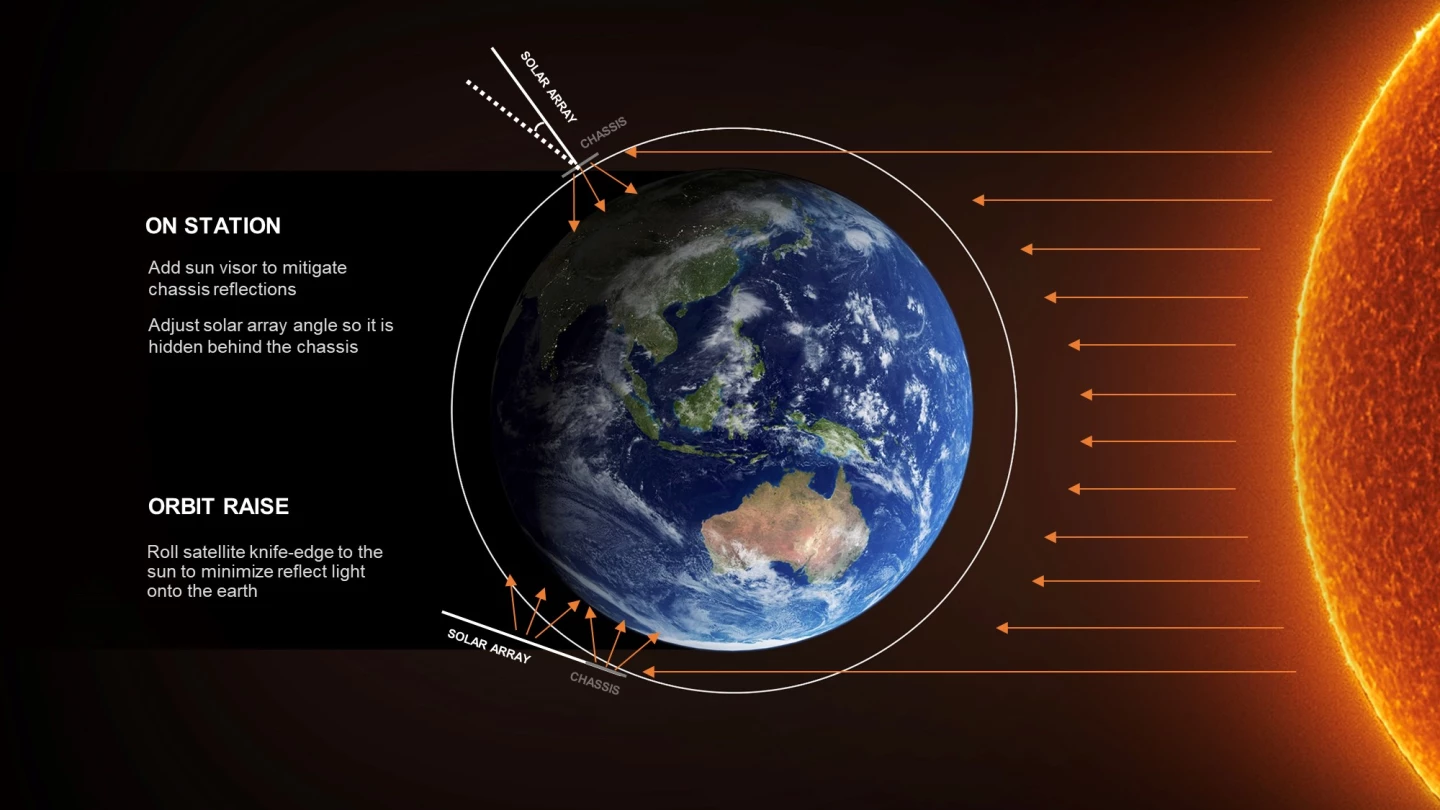SpaceX has swiftly followed last week’s historic launch of the Crew Dragon with another momentous liftoff, this time firing a further 60 high-speed internet satellites into orbit as part of its Starlink project. Among those was a prototype fitted out with an experimental sun visor designed to reduce the reflectivity, which shapes as a potential solution to a problem that has plagued astronomers banking on clear views of the night sky.
Through its Starlink program, SpaceX hopes to blanket the entire globe in high-speed internet and connect the billions of people that currently go without. All going to plan, the mega-constellation will include some 42,000 satellites, with today’s launch of 60 the eighth of the program, bringing the total currently in orbit to 482.
These satellites began to cause some controversy last year, with astronomers finding their observations were being compromised by the bright streaks of light. SpaceX has also experimented with darkening treatments to make them less visible, and now it is testing out a more sophisticated approach which it revealed in detail last month.
One of the 60 Starlink satellites that launched as part of today’s mission was equipped with a deployable sun visor, designed to block sunlight from hitting most of the spacecraft’s body. The visor packs flat against the satellite chassis for launch and then is deployed once it separates from the rocket, combining with controlled maneuvers to reduce its overall reflectivity.

Today’s launch from Cape Canaveral went off without a hitch, with the prototype VisorSat joining the other Starlink satellites in orbit. Soon after, the first stage of the Falcon 9 booster came down to land on SpaceX’s droneship stationed in the ocean. This marked the fifth time that same Falcon 9 had launched and landed, the first orbital class rocket booster to do so.
According to SpaceX, all satellites launched on the ninth Starlink mission will be fitted out with these visors. This is scheduled to take place later in June.
Source: SpaceX






